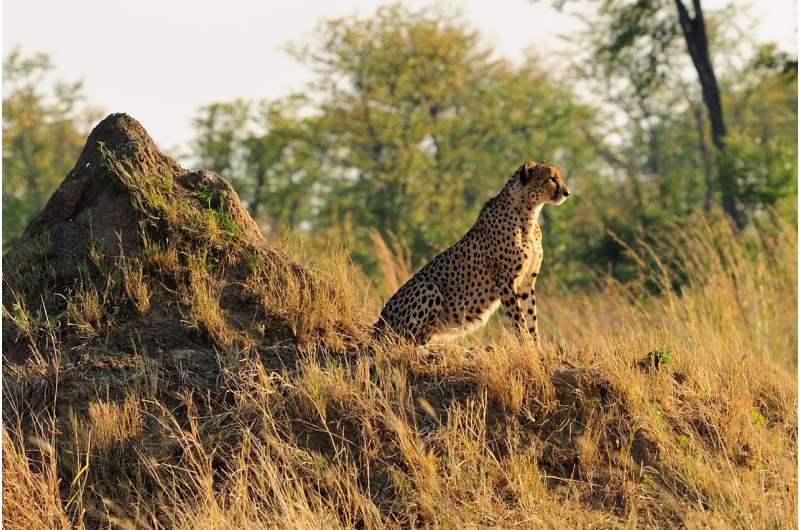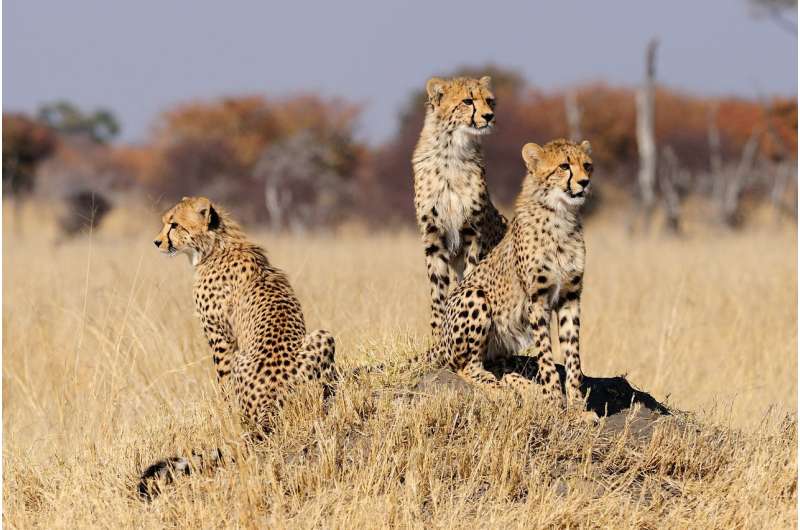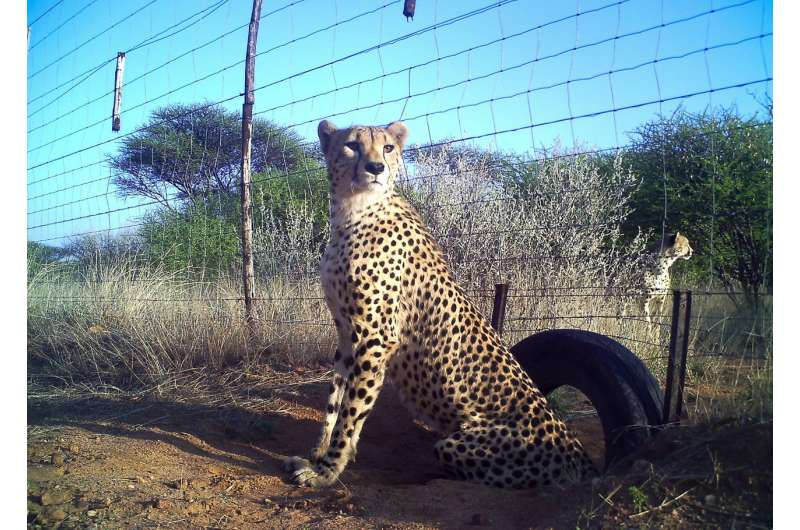Scientists urge endangered listing for cheetahs

A comprehensive assessment of cheetah populations in southern Africa supported by the National Geographic Society reveals the dire state of one of the planet's most iconic big cats. In a study published today in the open-access journal PeerJ, researchers present evidence that low cheetah population estimates in southern Africa and population decline support a call to list the cheetah as "Endangered" on the International Union for Conservation of Nature (IUCN) Red List.
With partial support from the National Geographic Society's Big Cats Initiative, an international team of 17 researchers, led by Florian Weise of the Claws Conservancy and Varsha Vijay of Duke University, analyzed more than two million collared cheetah observations from a long-term study by the Leibniz Institute for Zoo and Wildlife Research and another 20,000 cheetah observations from the research community and the general public. Their findings show that free-ranging cheetahs were present across approximately 789,700 square kilometers in Namibia, Botswana, South Africa and Zimbabwe between 2010 and 2016.
"This collaborative, multiyear effort sounds the alarm about the state of cheetah populations in southern Africa, shining a light on the imperative need to protect these majestic predators," said Gary E. Knell, President and CEO, National Geographic Society. "The National Geographic Society is proud to support such a comprehensive assessment and similar efforts aimed at safeguarding our most precious species, their habitats and the planet we call home."
The study estimates only 3,577 adult cheetahs exist in this extensive area, which is larger than France, and a majority (55 percent) of individuals are found within only two habitats. This estimate is 11 percent lower than the IUCN's current assessment, supporting the call for the uplisting of cheetahs from "Vulnerable" to "Endangered."

A novel aspect of the research was the use of observations from the general public. "For a highly photogenic species like the cheetah, using crowd-sourced photographs and videos taken by tourists is an innovative and cost-effective approach, especially in well-visited protected areas," said Weise.
"This is the area with the largest population of free-ranging cheetahs left on Earth. Knowing how many cheetahs there are and where they occur is crucial for developing suitable conservation management plans for the species," added Vijay.
The study not only estimated the number of cheetahs in areas with confirmed sightings, but also identified places where it is possible for cheetahs to live but where they have not been recently observed. The authors used information about cheetah habitat and human and livestock densities to identify an area of possible cheetah presence almost as large as the confirmed cheetah range.
"To better understand this rare and elusive species, we need to complement the monitoring of confirmed populations with the investigation of possible cheetah habitat," said Vijay.

This study also confirmed that the status of cheetahs on privately owned land is a pressing conservation issue. The researchers found that only 18.4 percent of cheetah range is within internationally recognized protected areas. Namibia exemplifies this, with much of cheetah distribution overlapping with areas of livestock and game production.
Interviews with some farmers who share their land with cheetahs showed that nearly half of those surveyed consider cheetahs a source of conflict (49.7 percent), while only a minority of farmers (26.5 percent) actively persecute (e.g., kill or trap) the species. Using population models informed by persecution data, the study found that even a few farmers persecuting animals can cause population declines, especially when reproductive conditions are not optimal.
"The future of the cheetah relies heavily on working with farmers who host these big cats on their lands, bearing the heaviest cost of coexistence," said Weise.
The authors conclude that the results of this study strongly support the recent call, led by the Range Wide Conservation Program for Cheetah and African Wild Dogs' team at the Zoological Society of London, for the IUCN to uplist the cheetah from Vulnerable status to Endangered. This step would create awareness about the cheetah's precarious situation and open more avenues to fund conservation and population monitoring efforts. Besides giving direction to further research, the authors provided an example of effective collaboration and transparent information sharing.
"By working together and reaching out to the public for assistance, conservationists can chart the way forward to help secure the future of the cheetah," said Dr. Stuart L. Pimm, Doris Duke Chair of Conservation Ecology at Duke University and senior author of the study.
More information: Florian J. Weise et al, The distribution and numbers of cheetah (Acinonyx jubatus) in southern Africa, PeerJ (2017). DOI: 10.7717/peerj.4096
Journal information: PeerJ
Provided by PeerJ





















